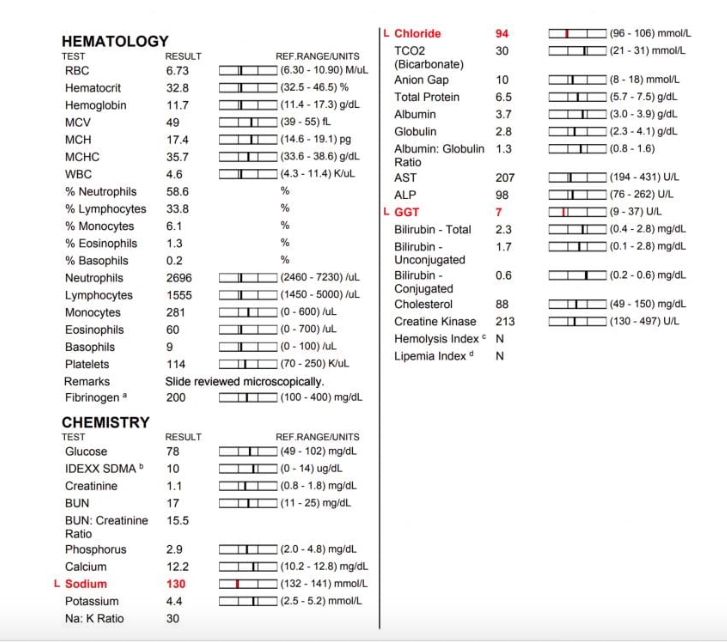- with David Ramey
THM is privileged to share this important article by one of our very favourite veterinary writers, David Ramey DVM. David’s website https://www.doctorramey.com is filled with scores of thoughfully written, often challenging, articles on horses and their veterinary care. Do yourself a favour and check it out… over to David:
I think it’s time to talk a little bit about blood tests for horses. Not each and every individual blood test, of course – that would be a number that would almost be too large to count. Books have been written about such topics. Rather, let’s discuss a little about more general interpretation of blood tests.
The reason I bring this up is that I find many clients – and even some veterinarians – will look at laboratory blood test results in something of a vacuum. So, for example, a concerned owner will ask for a copy of blood test results (results that they have a perfect right to see, of course), look for “highs” and “lows,” and then try to come up with some sort of reason for the “abnormality.” First, let’s look at a lab test.

You’ll notice that by each of the values, there’s a little bar graph. It’s divided into thirds, with the middle third being the lab “normal.” Everything else is either above or below the lab normal. In case you’re wondering, this little bar graph is called the reference interval (RI).
The problem is that lab tests aren’t always as easy to interpret as just looking at a bar. Herein begins one of the big problems that some people have when it comes to reading blood tests. Someone who is inclined to be attracted to simple explanations might look at the test and say, “Wow, the horse’s sodium, chloride, and GGT are below normal. I wonder what’s wrong?” Which, honestly, is not an unreasonable question. However, the answer is most likely, “Nothing.” Here’s why.
Lab “normal ranges” are simply an average of many blood samples. The bar, as it were, is moved both above and below the average (this is a matter for statisticians). Moving the bar up and down eventually produces a group that includes 95% of the subjects studied. Another way to look at the normal range is that 95% of the horses should fall in that range. That’s great, as far as it goes.
The problem – insofar as overinterpreting tests goes – is that there are still at least 5% of the normal population of horses that fall on either side of the laboratory normal reference interval that may still be perfectly healthy. Unfortunately, when some lab finding falls just outside of the laboratory RI, an individual can get diagnosed (and sometimes treated) as “abnormal.”
The thing is, “Normal” is not an absolute condition: it’s relative to the overall well-being of your horse. “Normal” typically lacks any sort of a universal definition. Take your horse’s front legs. Does he toe in? Toe out? Are his legs perfectly straight? What’s normal?
Blood tests work that way, too. It’s entirely possible for your normal, healthy horse to have a blood test that’s on either side of the laboratory range. It’s not necessarily abnormal. Here are a couple of examples.
- You submit a complete blood count for your horse because you want to see how he’s doing (not necessarily a good reason, but it happens). A complete blood count (CBC) looks at things like the total number of red and white blood cells and the amount of protein in the blood. The laboratory range is 6.3 to 10.9 M/µL (if you like these sorts of units, you were probably very good in chemistry). Your horse’s level is 6.0. Is this something that you need to do something about? Is he anemic (that is, does he lack red blood cells)?
- Take the test that I posted earlier. Let’s say it’s summertime and it’s been hot. You have some blood drawn because you’re worried about him. His sodium and his chloride – important salts, to be sure – are just below the lab “normal.” Should you start giving him salt?
If your horse seems otherwise healthy, the answer to both questions is almost always going to be, “No.” In the absence of any other signs of a problem, something that’s just over or under the laboratory “normal” isn’t likely to be abnormal, that is, it isn’t likely to be anything to worry about. It’s more likely to just be normal for your horse at the time that the test was taken – and that doesn’t even get into possibly problems with the way that the sample was handled.
Overinterpretation of blood tests can go the other way, too. So, for example, say you have an older horse that you’re concerned might have Pars Pituitary Intermedia Disorder (mercifully abbreviated as PPID and more commonly known as Equine Cushing’s Disease). Let’s say you run a screening test for ACTH (which is one of the more commonly performed tests) and the lab test comes back at the high end of the laboratory’s normal range (for the lab that I use, the normal range is 9 – 35 pg/mL). Let’s say that your horse’s test reads 34 pg/mL. Does that mean that he’s close to developing PPID? Does that mean you need to start him on medication? Nope. In the absence of any other clinical signs, it most likely means that on that day, he was at the higher end of the laboratory’s normal range. If you’re still worried, you can always run another test somewhere down the road. In and of themselves, if your horse seems otherwise normal, he probably is.
All of this can lead to a bigger problem that besets the horse world (and one about which I’ll get around to writing soon). That problem is known as “Medicalization” (also known as “Disease mongering”). Medicalization occurs when some normal variation gets labelled as absolutely abnormal and a treatment gets prescribed, accordingly. If a normal health variation is taken as some sort of pathologic state, it opens the door to all sorts of needless and expensive treatments, big profits for sellers of those treatments, and empty wallets for horse owners, all without the slightest benefit for horses.
Of course, blood tests are very useful. If your horse is running a fever, has a snotty nose, has a cough, and isn’t eating, a blood test showing an elevated white blood cell count and increase inflammatory proteins has meaning. If you horse has a curly hair coat, won’t shed, and is 23 years old, an elevated ACTH level is likely to mean something. But in the absence of other signs of a problem, some laboratory result that’s on the border of what a laboratory has established as “normal” is more likely than not to be normal for your horse.
BOTTOM LINE: If your horse is otherwise healthy, you probably don’t need to worry too much about some lab value that’s near the top or the bottom of a laboratory established reference range. Your horse probably doesn’t like having needles stuck in him anyway.

